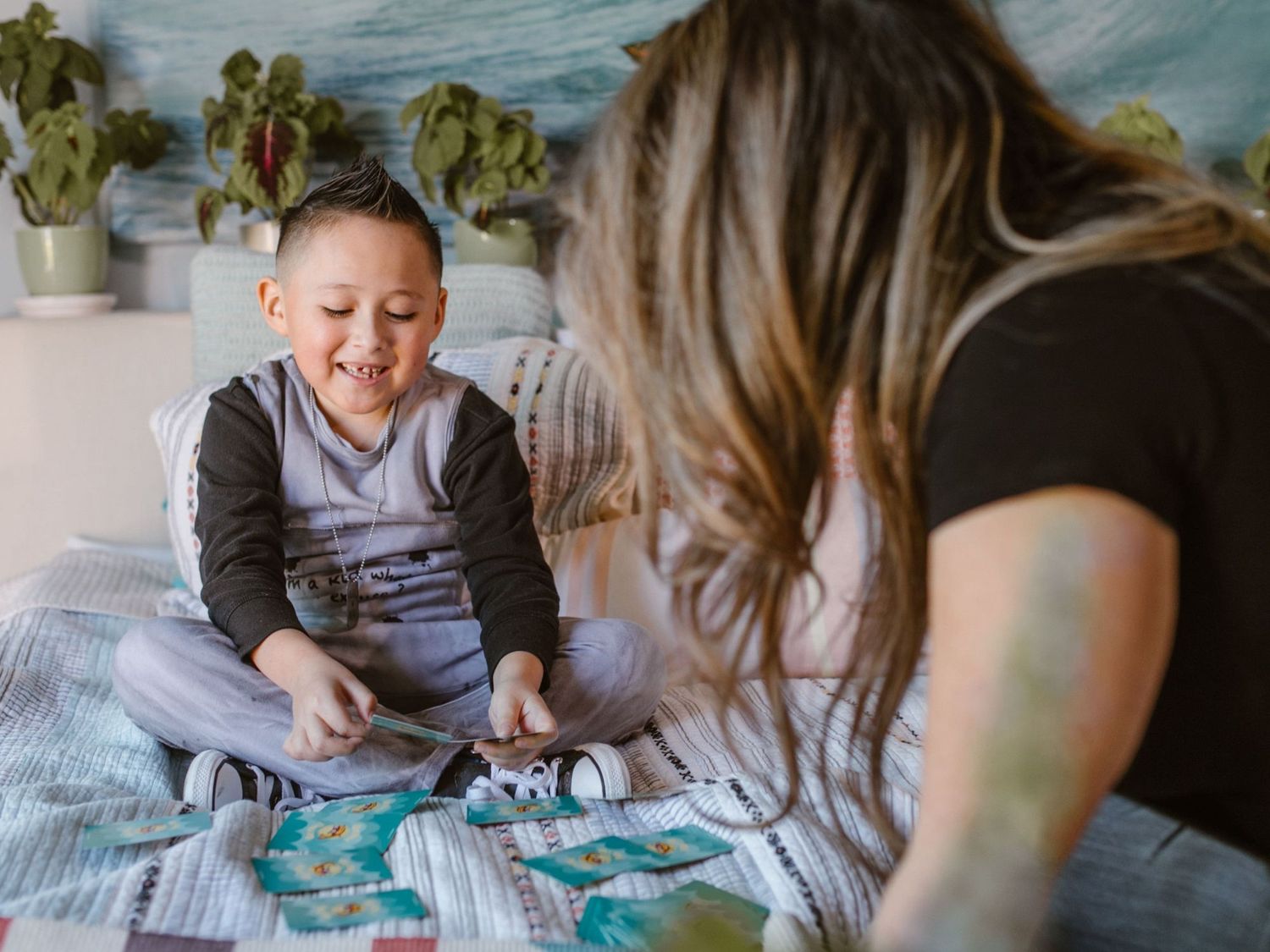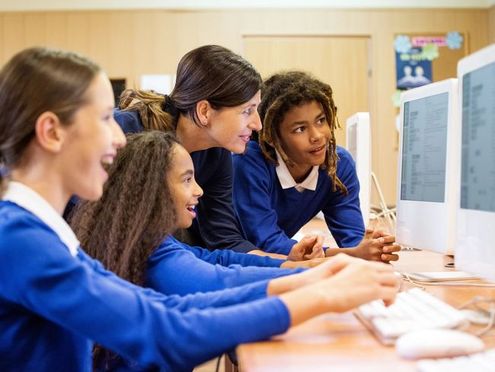The benefits of reading in primary school
Developing a strong foundation of reading skills in primary school provides many benefits. Most obviously, it helps learners engage with texts across the syllabus, allowing them to understand the new information they encounter at school and beyond.
But developing a positive attitude towards reading has many other benefits as well:
- Being able to read a range of texts helps children to widen their vocabularies.
- Regular reading will help learners to hone their concentration skills.
- Reading books can give learners access to ideas and experiences they haven’t encountered in real life, developing their understanding and imagination.
- Engaging with stories about other people can help children build empathy.
Giving learners fun ways to develop reading skills can therefore help to set them up for life.
6 fun reading games for primary learners
We’ve got plenty of blogs that can help you to encourage your child to read more, improve your child’s reading comprehension at home and even suggest books that can improve vocabulary or inspire inclusion in young readers. But how can we make reading fun enough to entice even the most reluctant of readers? One tried-and-tested method is to make reading part of a game, which can be especially useful for younger children who might not have developed a habit of reading for pleasure yet.
Below, you’ll find suggestions for fun reading games you can try at home or in class.
1. Book Bingo
Book Bingo is, as you might have guessed, bingo with books! This game might take a little bit of preparation, but it can be played throughout the whole summer, or for as long as it takes to complete. For this, you’ll need to create a bingo card with rows and columns that form boxes. Each box should set a reading challenge for your learner. These might be based on:
- Specific books or authors your learner needs to read to complete the challenge.
- Themes that encourage learners to read a range of books (e.g. read a book about animals).
- Ideas or concepts that readers can look for within a book (e.g. read a book which covers the concept of friendship).
Once you’ve done this, the aim will be for the learner to complete rows and columns on the bingo card by checking off the challenges in each box.
Top Tip: To encourage learners to keep the game going, you can come up with rewards they can earn for each row or column they finish.
2. Snakes and Ladders
A twist on the classic board game, Sight Word Snakes and Ladders is a great way to integrate reading practice into a game suitable for young learners. All you need is:
- A Snakes and Ladders board (or a printout of one) that you’re happy to modify by adding words to each space, plus a dice and the game pieces.
- A list of sight words you want your learner to practise. These should be added to each space on the board (either by writing them on paper and sticking them to the board or by adding words directly to the game spaces).
The game then proceeds as normal, with players rolling a die to move across the board, going up ladders and down snakes if they finish their turn on them.
However, as they move, players need to read out the words in each space. If they get each word right within 10 seconds, they can continue their turn based on the die roll. But if they get the word wrong or run out of time, the player’s turn ends, and you can then offer a correction before moving on to the next player’s turn.
3. Word Search
A simple but effective way to gamify reading is to create a word search. Specifically, this is a great way to give learners a chance to practise recognising common words by sight.
You can also adjust the difficulty to suit the children playing the game. For younger learners, you might want to make sure the words in the grid can all be read left to right or top to bottom. Then you can increase the size of the grid and introduce words that read diagonally (or even backwards) to challenge more advanced readers.
Word searches can even be themed around a specific topic or subject area. This works well for use in the classroom as well as at home. For instance, a science-themed word search can help learners to reinforce scientific terminology they’ve learned while practising reading skills.
4. Find the Word
A slightly more advanced reading comprehension game is Find the Word.
In this activity, you give your learner a passage of text. Then, you read out a word and ask your learner to find a synonym for that word in the text.
As well as testing learners’ reading comprehension, this game can help children develop a better understanding of how synonyms work and how to use them in writing.
Top Tip: Instead of looking for synonyms, you could ask learners to look for all the words of a certain type in the text (e.g. all the nouns or all the adjectives).
5. Sight Words Go Fish!
In Sight Words Go Fish, as in regular Go Fish, players take turns to ask one another if they have any cards of a particular type. And the aim is to collect cards of the same kind.
But this version has a vocabulary twist! To play, you’ll need to make a deck of cards comprising pairs of words (e.g. two cards that say “today”, two that say “after”).
Once you have this, deal each player seven cards (or five cards if there are three or more players). Then, players take turns as follows:
- The first player (Player A) selects a card and reads the word out loud before asking another player (Player B) whether they have a card with the word they read out. If they struggle with the word, help them to read it correctly.
- If Player B has the card specified, they pass it to Player A, who places the matching pair in front of themselves so everyone can see, then gets to go again. If not, Player B says “Go Fish”, and Player A draws a card from the deck. If it matches the card they asked for, they place the pair face up in front of themselves and take another go. If not, the turn passes to the player who said “Go Fish!”
The game then continues until someone runs out of cards (or all cards have been drawn from the deck). The winner is the player with the most matching pairs.
Top Tip: The cards created for this game can be used for other pair matching games too, like Memory Match below!
6. Memory Match
Sight Words Memory Match is a version of the standard memory match game – where players take turns to reveal cards, looking for matching pairs – based on sight words.
For this, you’ll need a set of memory cards. There’s no limit on how many you can use, but it makes sense to start small (e.g. 20 cards, which is enough for 10 word pairs). Make sure your cards are all the same size, then add the words you want the learners to practise.
To play, arrange your cards in a grid, blank side up. Players then take turns to reveal two cards, reading out the word on the cards each time. If the words match, they get to keep the pair. If not, the cards are turned back over for the next player’s turn.
Play continues until all the pairs have been found.
Top Tip: For a twist on this basic game, you could try creating a version with rhyming words or synonyms instead!
Try an online literacy platform like Bedrock Learning
Another great way to improve reading for primary learners is to use fun and engaging online literacy platforms like Bedrock Learning. Perfect for independent reading, Bedrock is an ideal solution to encourage a love of reading with engaging content that a learner can complete on their own, with none of the set up needed for the games above.

Access Bedrock at home for only £3.59 per month
Bedrock offers engaging and interactive literacy lessons that cover a wide range of topics, helping learners to improve their reading comprehension, vocabulary and grammar all while having fun!




